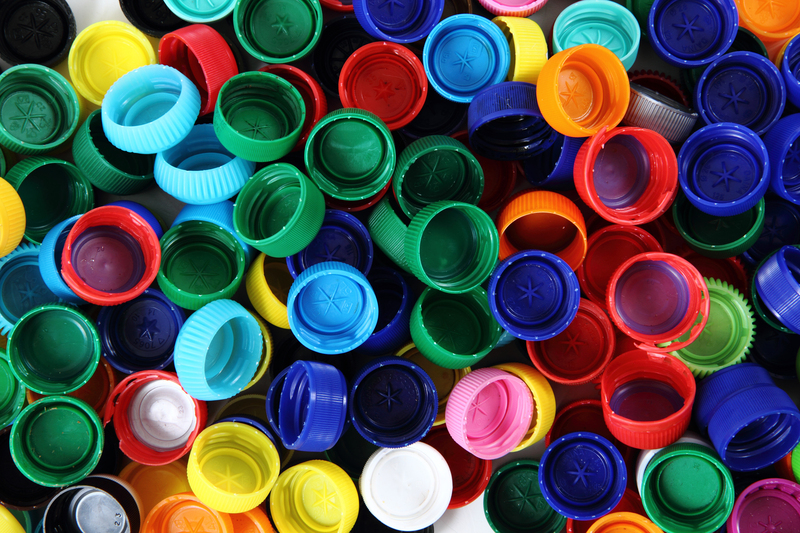Discover How Recycled Goods Become Design Masterpieces
In today's world, sustainability is more than just a buzzword--it's a necessity. As we search for innovative ways to reduce waste and make our lives more eco-friendly, a fascinating trend has emerged: transforming recycled goods into design masterpieces. In this in-depth article, we'll uncover how discarded materials are ingeniously repurposed into stunning works of art and everyday objects, captivating the attention of designers, eco-enthusiasts, and curious readers alike.

Understanding the Art of Upcycling
Before we explore examples of recycled goods design, it's essential to grasp the concept of upcycling. Unlike recycling, which breaks down materials into their base components, upcycling elevates old or discarded items by transforming them into products of greater value and aesthetic appeal. This process not only conserves resources, but also inspires creativity and innovation within the design world.
What Makes Recycled Product Design Unique?
- Eco-friendly approach: Upcycled pieces reduce the amount of waste sent to landfill and lower the carbon footprint.
- One-of-a-kind creations: Every masterpiece derived from recycled goods carries a unique story and individuality.
- Resource efficiency: Designers utilize existing materials, conserving water, energy, and raw resources.
- Community involvement: Upcycling encourages local participation and supports sustainable economic development.
The Journey: From Recycled Goods to Design Masterpieces
Step 1: Sourcing Discarded Materials
The journey toward transforming recycled goods into design masterpieces begins with the sourcing of materials. Designers seek inspiration in everyday objects that might otherwise be seen as rubbish--plastic bottles, broken electronics, wooden pallets, old textiles, and even car parts. Sometimes, they collaborate with recycling centers, scavenger yards, or local communities to gather materials with interesting textures and histories.
Step 2: Design Thinking and Conceptualization
Once sourced, the true magic begins. Designers apply creative thinking to envision how each item can serve a new purpose. This process often involves brainstorming, sketching, prototyping, and testing. The challenge lies in balancing form and function, ensuring that the final product is not only aesthetically pleasing but also practical.
Step 3: The Makeover--Crafting the Masterpiece
With a clear concept in mind, artisans and designers carefully clean, reshape, and reassemble the discarded materials. Techniques might include welding, weaving, painting, or 3D printing. The attention to detail and deliberate craftsmanship ensure that each design transcends its humble origins.
Iconic Examples: Recycled Goods Design Masterpieces
Furniture Made from Reclaimed Materials
Sustainable furniture design has blossomed thanks to the creative reuse of recycled materials. Companies like VivaTerra and Emeco have gained global acclaim for their innovative couches, chairs, and tables fashioned from reclaimed wood, steel, and even ocean-bound plastics. Notable examples include:
- The Navy Chair by Emeco: Made from recycled aluminum, these chairs have become a symbol of industrial chic and durability.
- Pallet Coffee Tables: Old shipping pallets sanded and stained create rustic, stylish pieces perfect for modern interiors.
- Bottle Cap Stools: Ingeniously fusing used bottle caps with sturdy frameworks, these stools exemplify functional creativity.
Fashion and Accessories from Recycled Goods
Fashion designers have embraced recycled goods as a source of inspiration and material. Brands like Patagonia utilize recycled polyester from plastic bottles for their outerwear, while Elvis & Kresse upcycle decommissioned fire hoses into luxury bags and wallets. Some remarkable designs include:
- Jewelry from Electronic Waste: Discarded circuit boards, wires, and even broken smartphones are transformed into bold, futuristic jewelry.
- T-Shirts from Recycled Cotton: Old clothing fibers are re-spun and woven into high-quality, soft t-shirts that minimize environmental impact.
- Sneakers Made of Ocean Plastic: Innovative brands like Adidas x Parley repurpose plastic debris collected from beaches into stylish and functional sneakers.
Art Installations and Urban Sculptures
Some artists use recycled materials to spark environmental conversations through enormous public installations. Noteworthy examples include:
- Washed Ashore: This art project turns tons of ocean plastic waste into larger-than-life marine animal sculptures, raising awareness about pollution.
- The Trash People by HA Schult: A global exhibition of life-sized human figures made from cans, electronic parts, and more, symbolizing consumer culture.
- Recycled Bottle Chandeliers: Designers use glass or plastic bottles to construct dazzling lighting fixtures gracing homes and public spaces alike.
The Benefits of Transforming Recycled Goods
Environmental Impact
By giving new life to recycled materials, designers help reduce the demand for raw resources. This practice curbs landfill waste, lowers energy consumption, and cuts carbon emissions. When you choose design masterpieces made from upcycled goods, you contribute to a cleaner, greener planet.
Stimulating Creativity and Innovation
Designers who work with recycled goods are pushed out of their comfort zones, often encountering unexpected challenges. This fosters a culture of problem-solving and ingenuity that leads to bold, inventive designs not found in mass-produced goods. The uniqueness of each object adds value beyond ordinary store-bought items.
Economic and Social Advantages
Upcycling supports local economies by creating jobs in collection, sorting, and craftsmanship. It can also empower marginalized communities by teaching them valuable skills and offering new sources of income. Moreover, recycled goods art and design consistently bring visibility to environmental issues, inspiring change in communities worldwide.
Tips for Integrating Recycled Goods Masterpieces Into Your Life
Want to experience the magic of upcycled design for yourself? Here are a few ways to get started:
- Shop Consciously: Seek out brands and artisans specializing in recycled materials.
- Attend Upcycling Workshops: Learn how to transform everyday waste into artistic or functional items.
- DIY Projects: Try your hand at creating furniture, art, or accessories from old objects around your home.
- Support Local Initiatives: Participate in community projects that collect, upcycle, and sell unique recycled creations.
By welcoming recycled design masterpieces into your home or wardrobe, you make a stylish, sustainable choice that benefits everyone.
Inspirational Designers Championing the Cause
Several visionary designers have carved out a niche in the world of sustainable design by turning trash into treasure. Here are a few who are leading the way:
- Terence Conran: His focus on simplicity and sustainability influenced a generation of furniture designers to embrace recycled materials.
- Neri Oxman: Fusing biology, architecture, and digital fabrication, Oxman pioneers ways to combine technology and waste materials into cutting-edge design.
- Yinka Ilori: Known for vibrant, upcycled furniture pieces, Ilori's work celebrates color, culture, and sustainable creativity.
- Susan Stockwell: This artist uses currency, computer parts, and maps in intricate installations, exploring global trade and environmental themes.

Challenges and the Future of Recycled Design
While the transformation of recycled goods into design masterpieces carries enormous promise, it's not without challenges. Issues such as sourcing high-quality waste materials, manufacturing restrictions, and consumer perceptions remain hurdles. However, continued innovation and increasing demand from eco-conscious buyers are propelling the field forward.
The future of recycled goods design is bright. As more brands and consumers recognize the beauty and necessity of sustainable design, the market for upcycled products continues to grow. New technologies like biodegradable plastics, advanced 3D printing, and modular furniture systems promise even greater potential for reusing materials creatively.
Conclusion: Celebrating the Beauty of Recycled Goods
From recycled furniture design to wearable art and architectural marvels, the journey from waste to wonder demonstrates the limitless creativity of human ingenuity. Discovering how recycled goods become design masterpieces isn't just a story of environmental responsibility--it's a testament to our collective vision for a better future. By supporting and celebrating upcycled design, we can all play a role in shaping a world where waste becomes an opportunity for art, utility, and inspiration.
Begin your journey today: explore, create, and champion the remarkable power of recycled design!